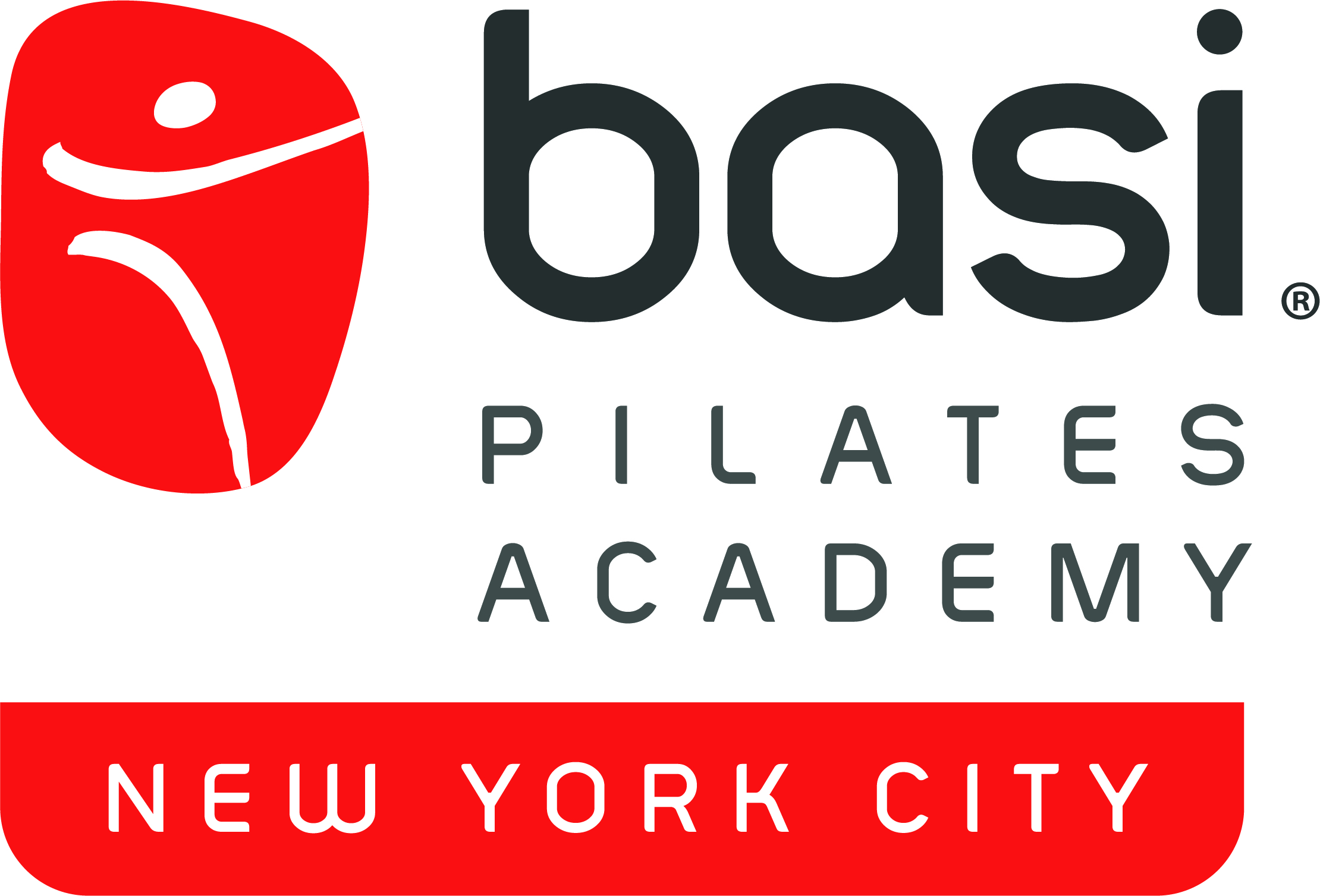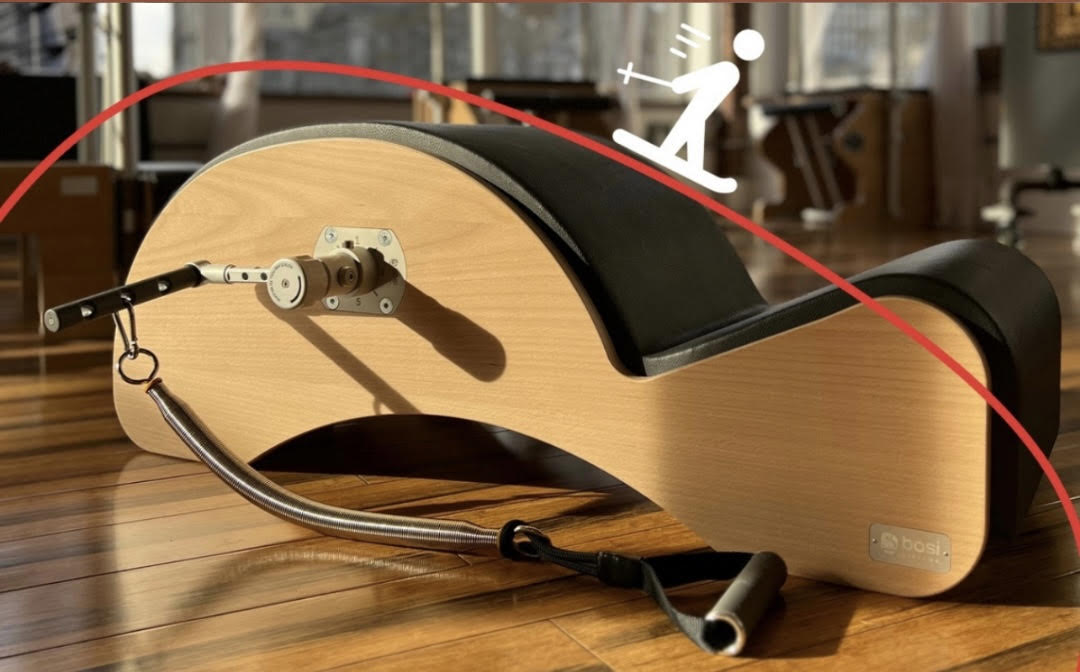Happy Holidays,
Let’s Not Go Downhill This Winter Unless It’s Skiing or
Snowboarding!
Winter is often a time when people loose healthy habits or ignore them altogether. Shorter days, colder temperatures and busy holidays can give us the much needed nesting and hibernation, which I personally welcome to an extent. However, in an effort to keep all the excuses to a minimum, embrace the season and get outside, find a cozy studio and set new goals, or commit to an at home workout plan. So if you ski, snowboard, long to try it, or just desire après, the workout and tips shown here will have benefit for you. We all can benefit from the balance, coordination, strength, agility, and accommodating gait required of a skier, so give these a try inside or out.
For those that know my work, in every sport and movement discipline I see a metaphor to life. Like life, sometimes we are flying downhill, trekking uphill, sidestepping through the unknown, dodging trees, digging your poles in just to move 3 feet, or just trying to stand without falling. Some days we are on top of the clouds, our path is crystal clear, and others we can’t see what’s right in front of us.
I didn’t put my feet into ski boots until my late 20s after meeting my husband who was a D1 hockey player and currently an extreme skier. Needless to say, he is literally a ski bunny and it may have been a deal breaker if I didn’t enjoy this sport to some degree. After a stint of me trying snowboarding in Vermont, from which my throat hurt for days from yelling swear words, he knew well enough to take me to Colorado where the snow is like fluff and I would enjoy the use of 2 legs on a pair of skis. I fell in love with this sport that I avoided as a dancer my whole life. I was also not daring as a kid and would have complained the whole time. But WOW! What an incredible way to see the world, to be active, and outdoors; a stark difference from my usual comfort in a sweaty dance studio. I am grateful for the ability to share this sport with my family and friends. I also know my limits and don’t try to keep up with anyone except myself. I am always in awe of my pro-skier/boarder friends who I sometimes can catch glimpses of, or when I’m lucky enough to get mini lessons from them.
As a movement analyzer, I can sometimes frustrate myself on the mountain, however it’s what I do, and how I take part in other people doing their thing for (literally) ever.
Many of my athletes crave a warmup before a long day on the mountain or a routine to do to with their usual workouts for the season. In all of my sports oriented programs I include:
Injury Prevention
Sports Specific Training
Cross Training Less Used Muscles
Injury Prevention
The most common injury in skiing is in the knee, specifically ACL tears. The knee is a hinge joint that relies on strong feet and hip muscles to distribute all the fun weight bearing activities we do as well as basic functional movements like climbing stairs, walking, and getting up and down from the floor.
The ligaments around the knee joint connect the bones of the upper to the lower leg and basically prevent the knee from moving too much side to side or front to back. We want the surrounding muscles to be strong to hold and rebound the knee as it works on unstable surfaces.
I often see misalignments and poor gait or tracking patterns even in top athletes basic functional movements. If you take poor patterning to the slopes it can exasperate the issue and even more so if you take a tumble.
And when you do take a fall, twist, or blow, the rebound and recovery will be much quicker on a leg that is strong and well aligned. So when doing all the squats, lunges and strength training, be extra mindful of the tracking and alignment of the hips, knees and feet checking that you are steering the knee caps in line with the toes. Be mindful that the knee direction is determined by the muscles around the hips and thighs, ie: gluteals, rotator muscles, hamstrings. Remember that detailed focus during designated training times will allow you to enjoy the big picture when taking it all in on the mountain later.
This leads me to the next very important element of…
Sports Specific Training
This discipline leads to so much freedom and longevity in the sport of skiing or snowboarding. Awareness of intrinsic foot muscles will stabilize you while your hip and leg muscles effortlessly drive you down the mountain side to side, over bumps, through powder, and maybe in and out of trees. We work the full circumference of the hip which includes, front, back, inside and outside muscle strengthening motions with dynamic stability of the pelvis.
Command over your body and the ability to use your eyes to decide where you are going only comes by practice and repetition.
One of the main components I like to add in along with the feet and legs is a useful torso, often coined as “core strength.”
Cross Training
I always find that working the less obvious improves everything and just makes us feel so good. For a ski program I would always include upper body strengthening and broader range of motion in the leg ab and adductors.
For a more beginner skier, they are always surprised by how much harder it can be on a green run that is seemingly easier because it is more flat. Here you have to skate and push yourself to the lift by pushing your poles into the snow.
Cross Training
I always find that working the less obvious improves everything and just makes us feel so good. For a ski program I would always include upper body strengthening and broader range of motion in the leg ab and adductors.
For a more beginner skier, they are always surprised by how much harder it can be on a green run that is seemingly easier because it is more flat. Here you have to skate and push yourself to the lift by pushing your poles into the snow.
Additionally the upper back will be more free and accepting of breath and motion below if it is strong and supple. I love to include upper back extensor work and shoulder flexion. You can often find me sitting on the chair lift with my arms stretched out to the sides while doing neck extensions and my arms reaching overhead. Perhaps I’ll design an on the slope routine next time. I always want to but I would get too embarrassed to film it.

